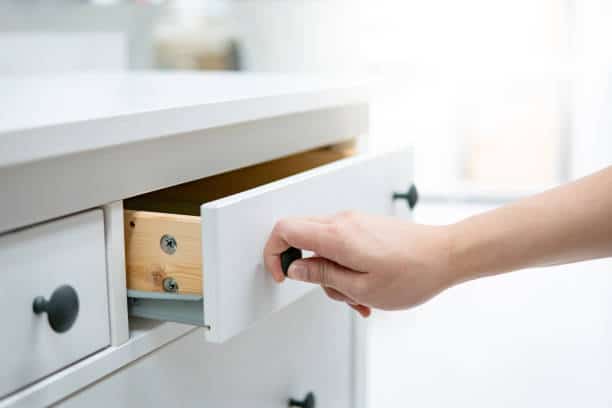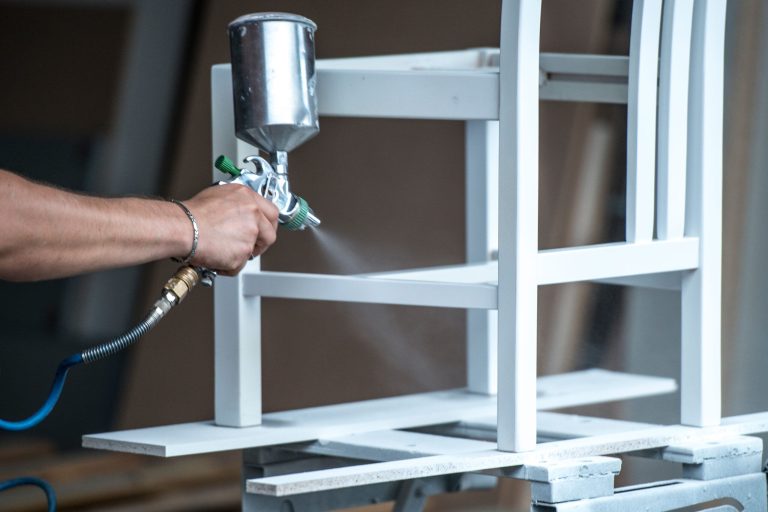How to Preserve Peonies Longer
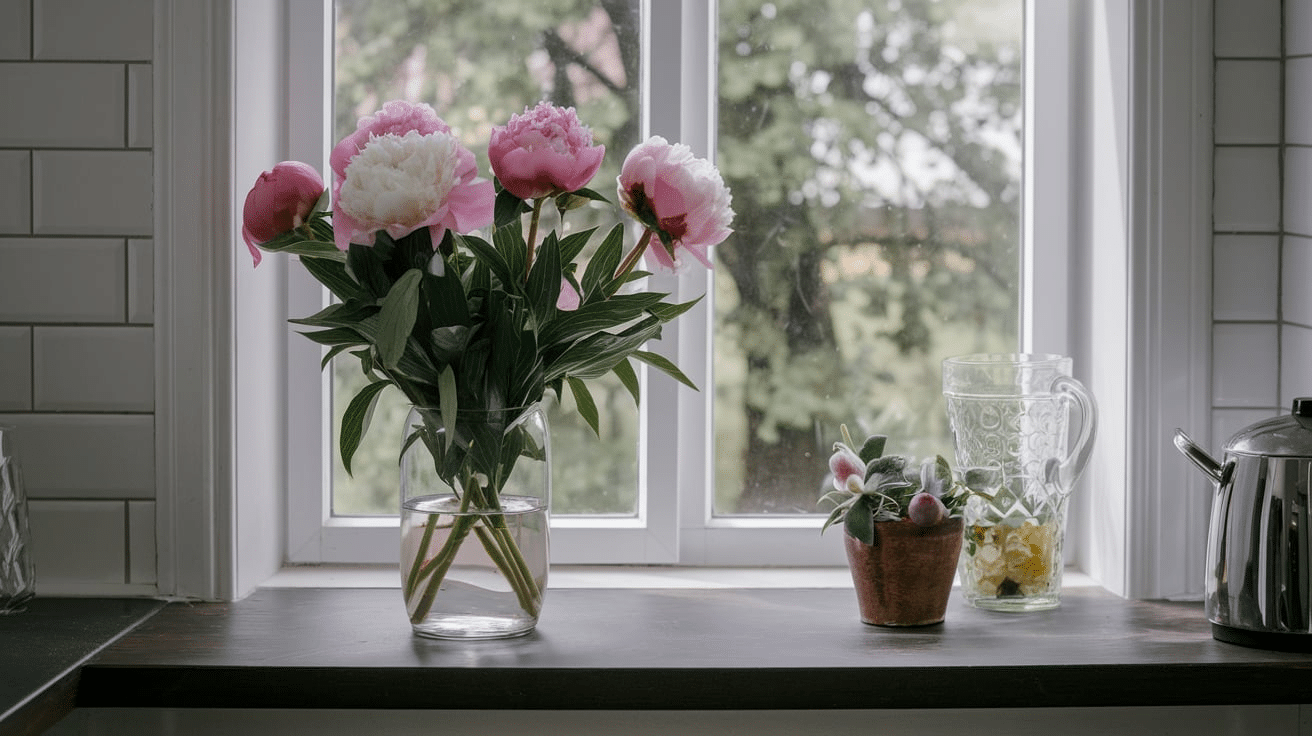
Peonies bring joy with their beautiful blooms, but their flowering season passes quickly. Many flower lovers wish these stunning plants could stay fresh longer.
The good news? You can extend the life of peonies through several preservation methods.
When done right, these techniques allow you to enjoy the beauty of peonies long after their normal bloom time ends.
This guide will show you exactly how to keep your peonies looking fresh for weeks or even months. You’ll learn simple but effective ways to maintain their color and shape.
Soon, you’ll be able to display these lovely flowers in your home all year round.
How to Preserve Peonies
Preserving peonies doesn’t need to be complicated. With the right method and a bit of patience, you can keep these beautiful flowers looking good for months.
Follow these simple steps carefully to get the best results with your peony preservation project.
1. Selecting Fresh and Healthy Peonies
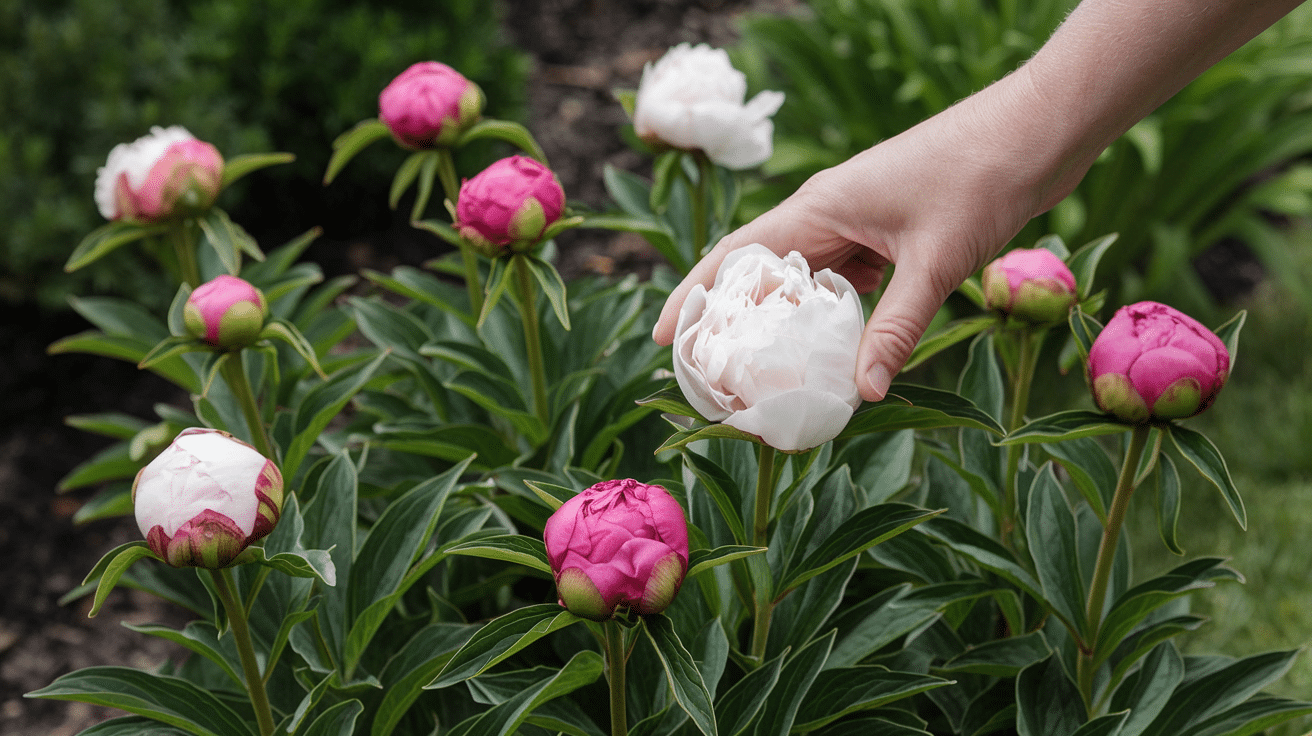
Choose buds that feel like soft marshmallows. The best peonies for preservation are those that are just beginning to open. They should feel firm but slightly soft when gently squeezed.
Look for stems without brown spots or damage. Healthy stems are crucial for water intake. Cut stems should be green and firm, not mushy or discolored.
Select flowers with vibrant, clear colors. Avoid peonies with faded petals or brown edges, as these signs indicate the flower is already past its prime.
Pick peonies in the morning afterthe dew has dried. Morning-cut flowers contain more stored food and water, making them last longer during the preservation process.
2. Trim the Stems
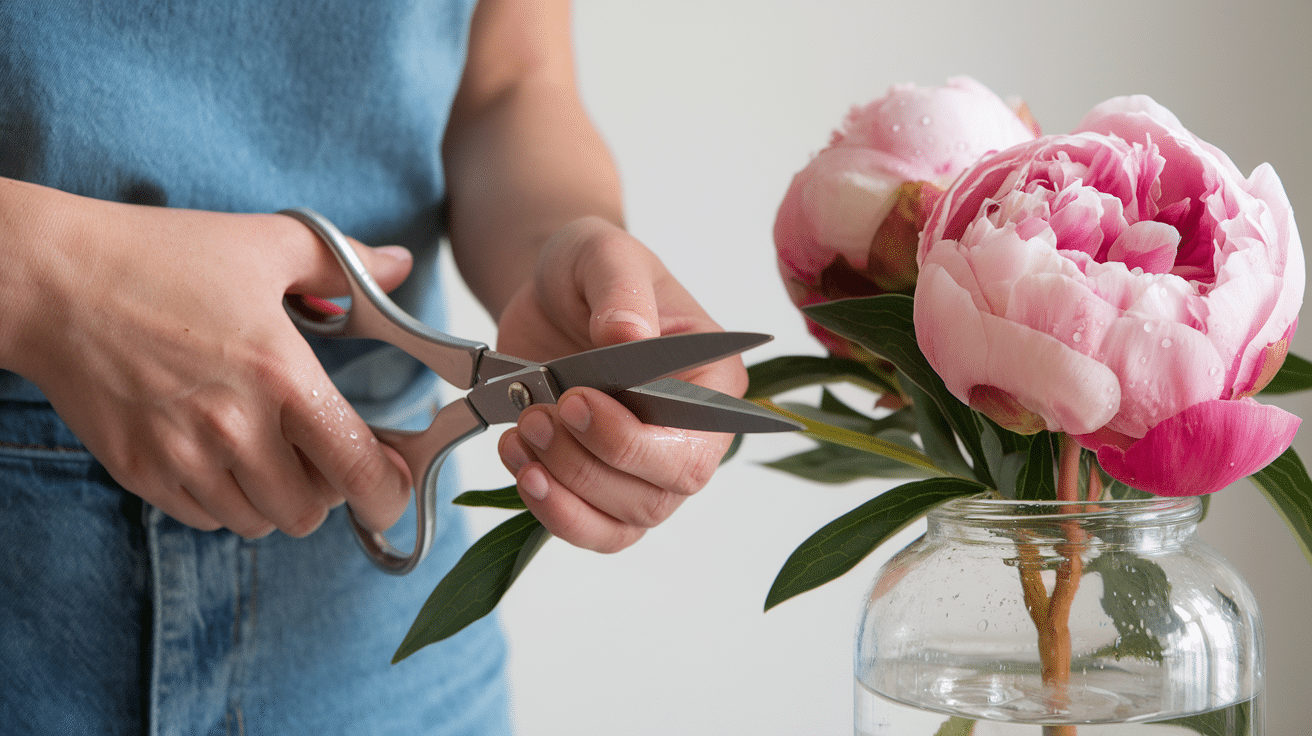
Cut stems at a 45-degree angle with sharp scissors. This creates more surface area for water uptake and prevents the stems from sitting flat at the bottom of your container.
Remove any leaves that would fall below the water line. Submerged leaves rot quickly and contaminate the water, shortening the life of your peonies.
Trim at least one inch from the bottom of each stem. Fresh cuts allow peonies to drink water more effectively, keeping them hydrated during the preservation process.
If using water preservation methods, re-cut stems every few days. Fresh cuts help maintain water flow to the blooms, extending their vase life before final preservation.
3. Place in Water
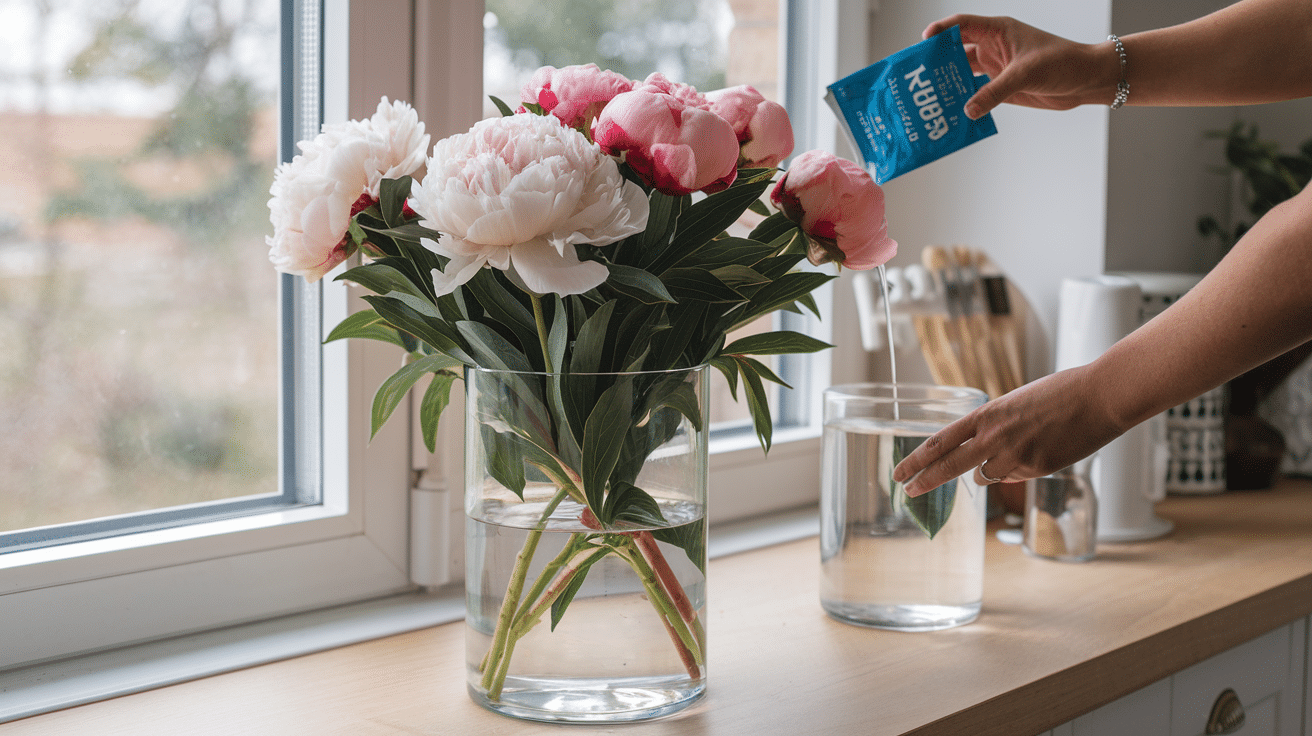
Fill a clean vase with room-temperature water. Cold water can shock the flowers, while warm water might cause them to open too quickly.
If available, add flower food to the water. This provides nutrients and helps prevent bacteria growth that can shorten flower life.
Place cut peonies in water immediately after trimming. Even a few minutes without water can form air pockets in the stems that block water uptake.
Change the water every two days. Fresh water prevents bacterial growth and keeps your peonies hydrated during the preservation preparation phase.
4. Remove Excess Leaves
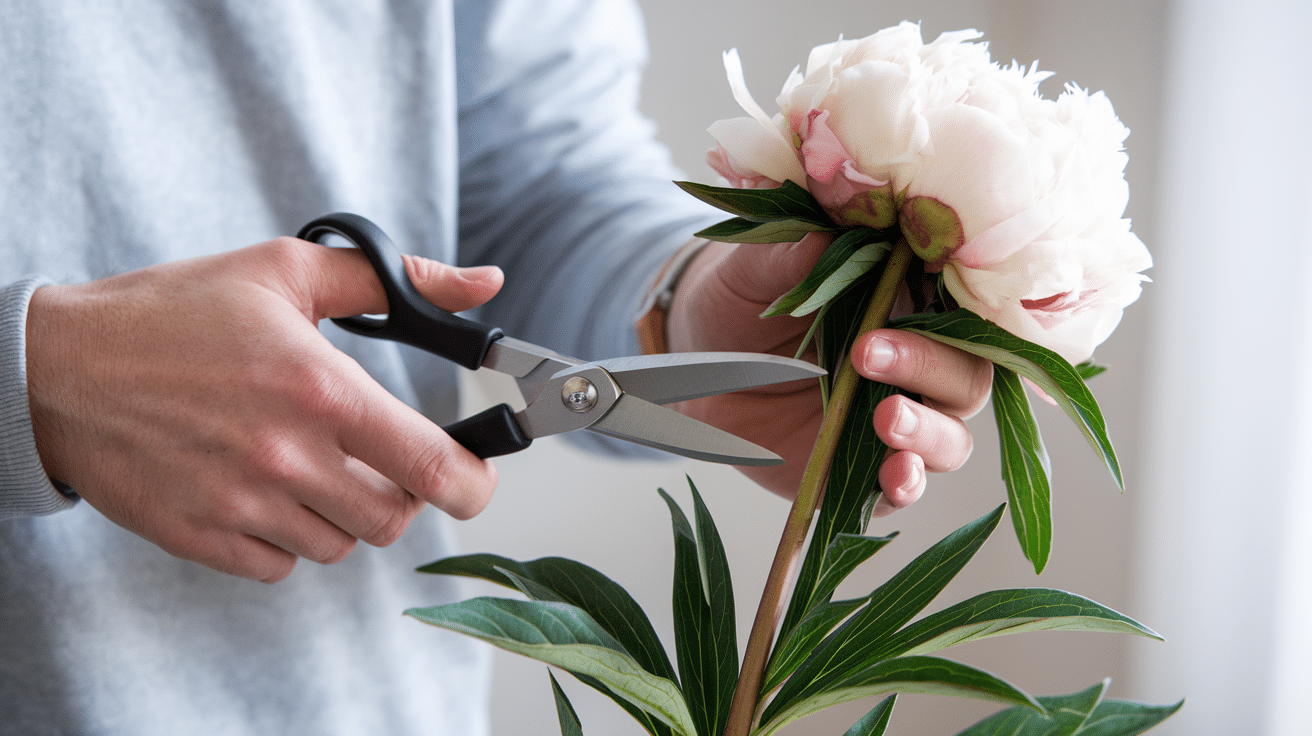
Strip away all leaves from the bottom two-thirds of each stem. Excess foliage draws moisture away from the flower head and can rot when preserved.
Use clean scissors or pruning shears to remove leaves. Pulling leaves by hand can damage the stem’s outer layer and affect water uptake.
If desired, keep a few top leaves for a natural look. One or two leaves near the bloom can enhance the appearance without causing preservation problems.
Check for small buds growing in leaf joints and remove them. During preservation, these secondary buds compete for nutrients with the main flower.
5. Change Water Regularly
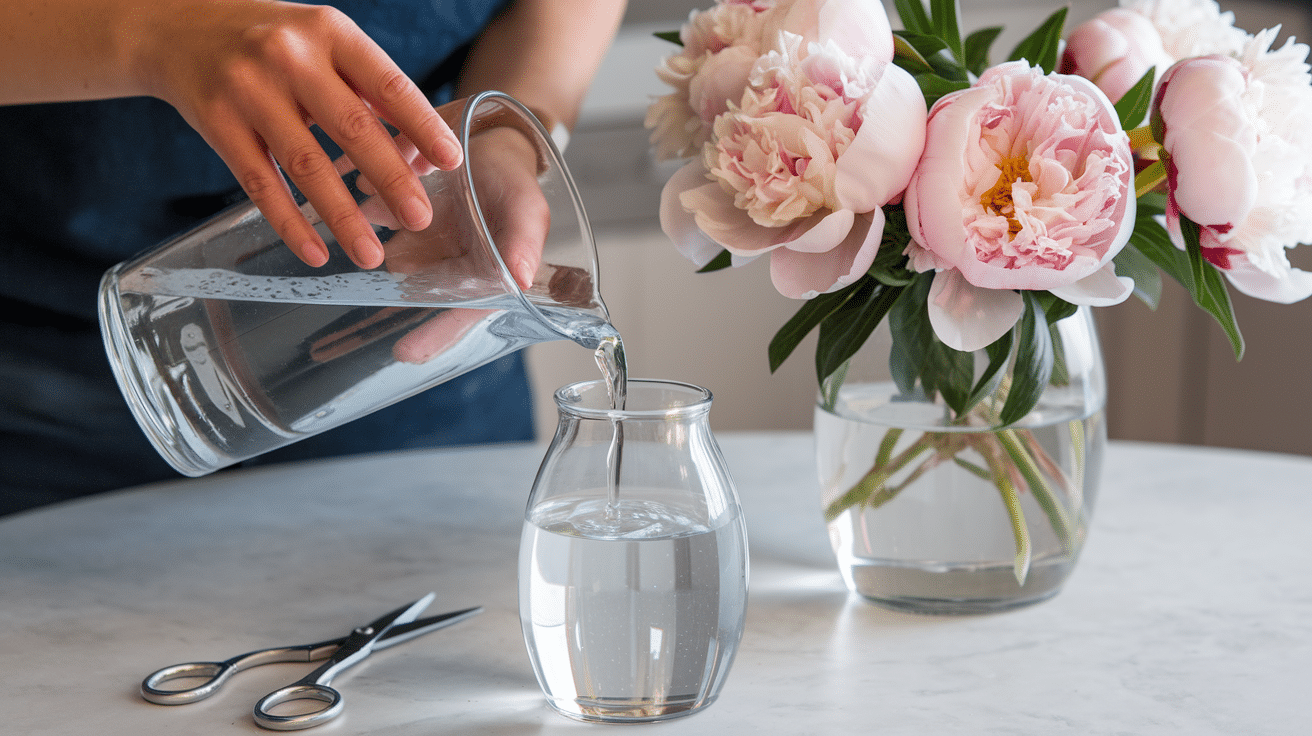
Empty and refill the vase with fresh water every 1-2 days. Clean water prevents bacteria growth that can clog stems and shorten flower life.
Rinse the vase with warm soapy water between refills. This removes any bacterial film that may have formed on the container walls.
When changing water, re-cut stem ends by 1/4 inch. Fresh cuts open new channels for water absorption, keeping the flowers hydrated.
Check water clarity daily and change it immediately if it becomes cloudy. Cloudy water indicates bacterial growth that will quickly damage your peonies.
6. Keep in a Cool Spot
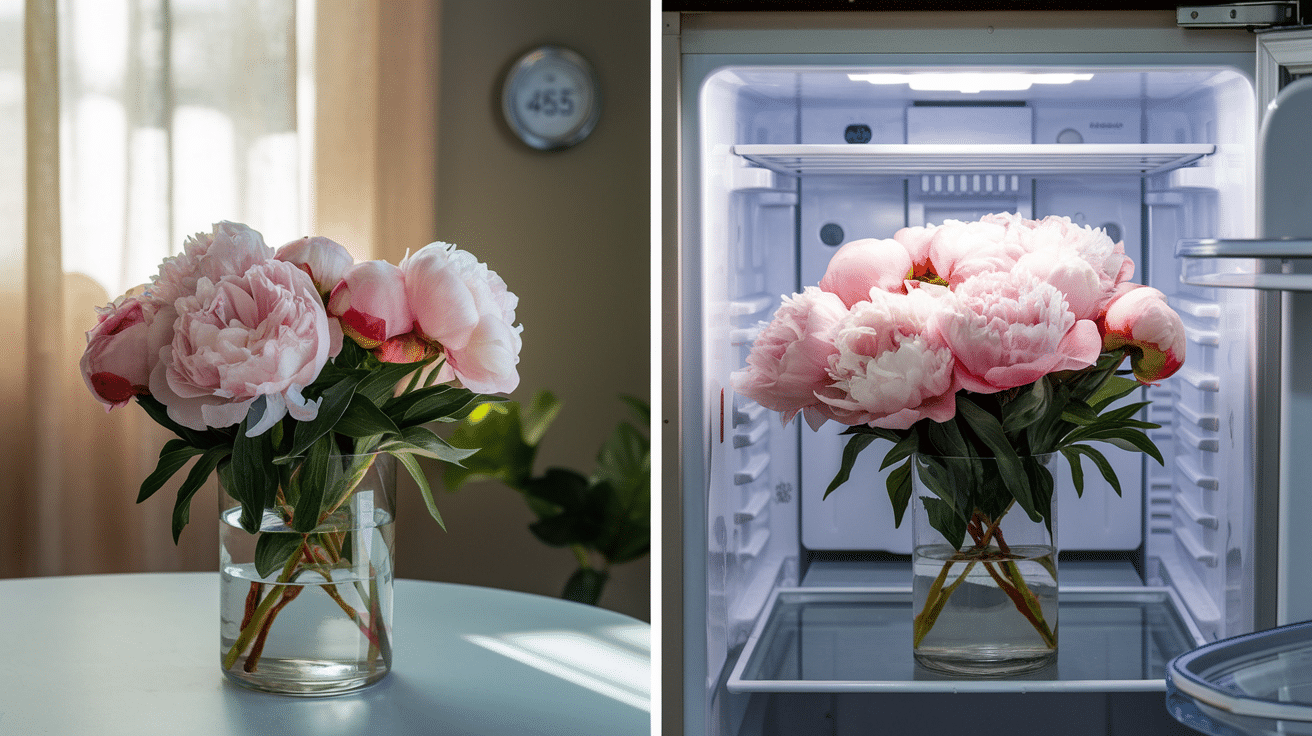
Place your vase of peonies away from direct sunlight. Sun exposure speeds up the aging process and causes flowers to wilt faster. You can also refrigerate it.
Avoid putting peonies near heat sources like radiators or electronics. Excess heat causes petals to drop and colors to fade more quickly.
If possible, keep the temperature around 65-70°F (18-21°C). Cooler temperatures slow the opening of blooms and extend their overall life.
Move peonies to a refrigerator overnight for maximum longevity. The cold temperature slows aging and helps maintain freshness during the preservation process.
7. Dry for Long-Term Preservation
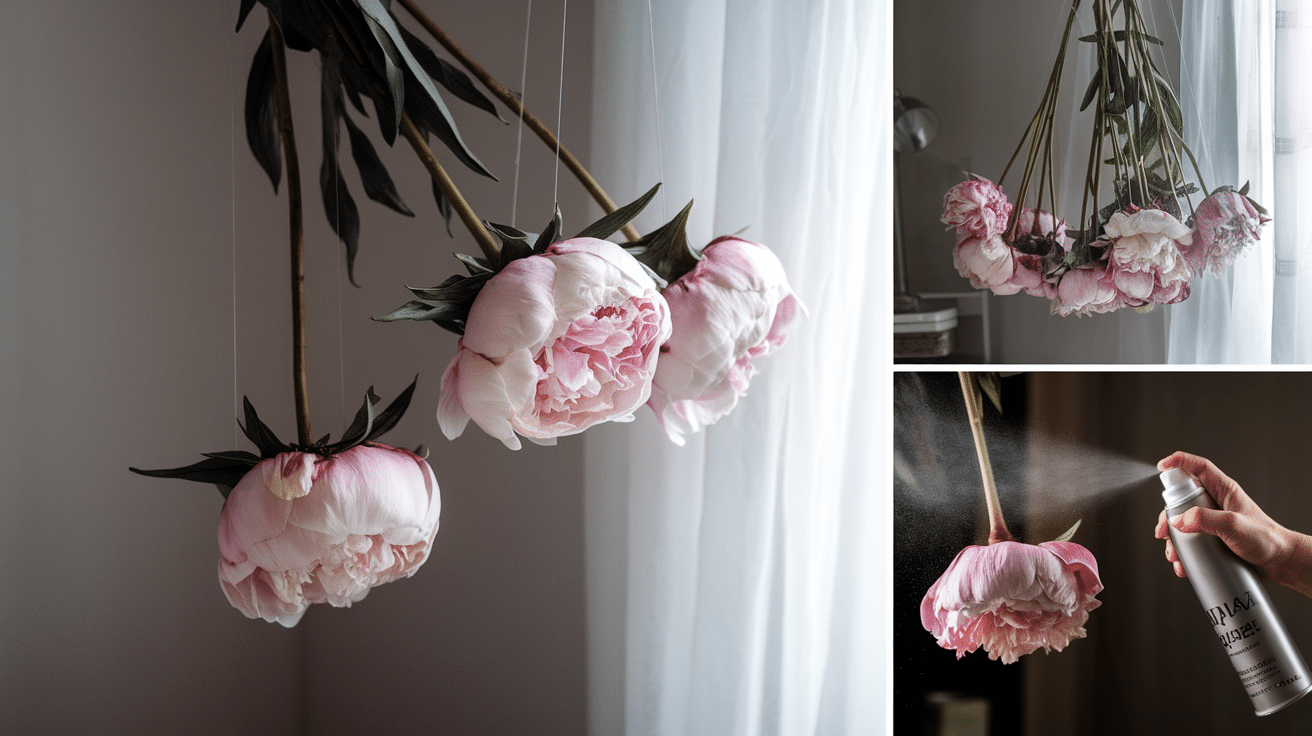
One of the best method is to dry peonies athome, select peonies that are partially open for drying. Flowers that are too open may lose petals during the drying peonies.
Hang the peonies upside down in a dark, dry room. This method helps maintain the flower shape while allowing moisture to escape naturally.
Allow 2-3 weeks for the peonies to dry completely. When ready, the flowers should feel papery to the touch.
Spray dried peonies with unscented hairspray for added strength. A light coat helps prevent petals from becoming too brittle over time.
8. Use Silica Gel for Shape Preservation
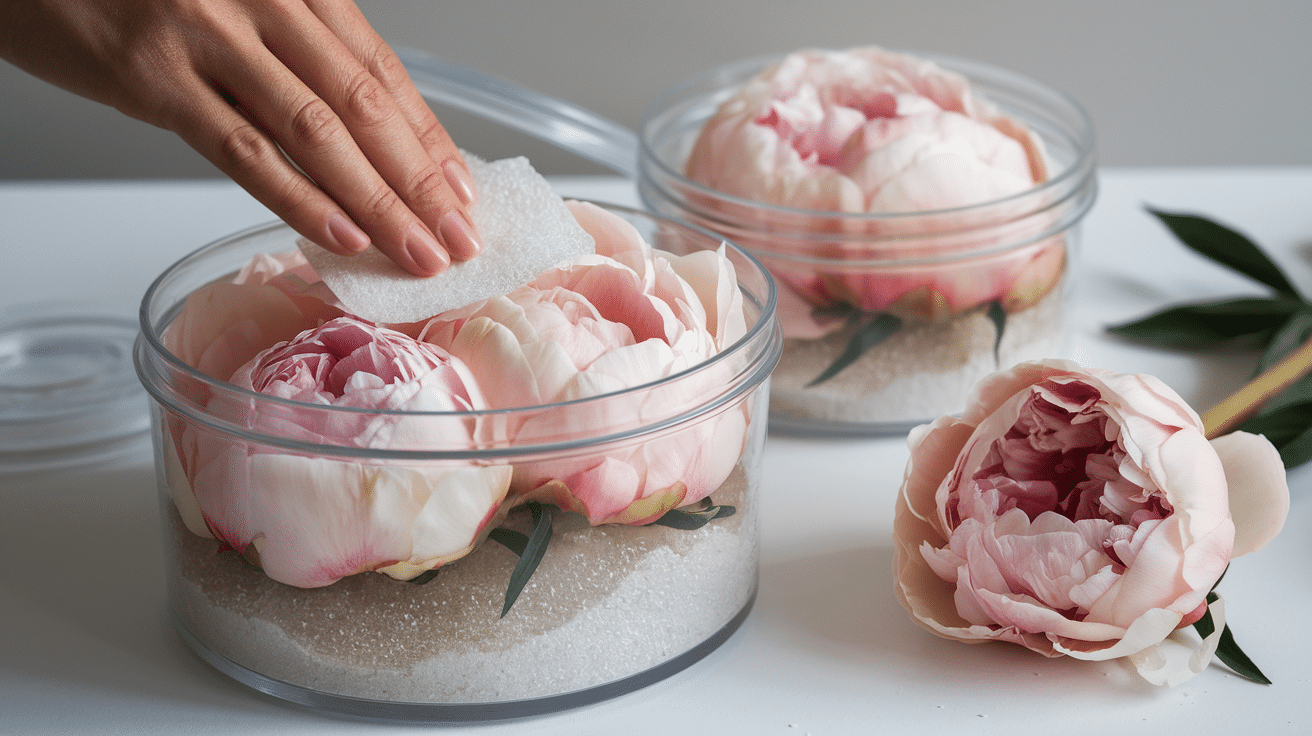
Pour a layer of silica gel into an airtight container. The gel absorbs moisture without damaging the flower structure.
The, llace peony blooms face up on the gel and gently cover with more gel. Make sure all petals are supported and not crushed.
Seal the container and leave it in a dry place for 3-5 days. The time varies depending on bloom size and room humidity.
Remove flowers carefully and brush off excess gel with a soft brush. The peonies will be completely dry but maintain their natural shape.
Why Preserving Peonies is Important
Preserving peonies allows you to enjoy their beauty beyond their short blooming period. These flowers typically bloom for just one to two weeks each year, making their splendor quite brief.
By using proper preservation methods, you can extend this joy for months or even years. Saved peonies make wonderful keepsakes from special events like weddings, anniversaries, or birthdays.
Many people find comfort in keeping flowers from meaningful moments in their lives. Preserved peonies also offer a cost-effective way to decorate your home year-round.
Instead of buying fresh flowers every week, you can display your preserved blooms for months. For craft lovers, preserved peonies provide materials for various projects like floral arrangements, wreaths, and greeting cards.
Lastly, learning to preserve these flowers connects you with traditional practices that have been used for generations. These time-tested methods help you appreciate the full value of your garden or bouquet.
How to Preserve Peonies for Special Occasions
Peonies make beautiful keepsakes for weddings, anniversaries, or other meaningful events. I often save flowers from special days as reminders of those happy moments.
- You can press peony petals between the pages of a heavy book lined with wax paper. They’ll flatten but keep their color for years.
- Another option is to dip peony blooms in wax. I melt paraffin wax in a double boiler, let it cool slightly, then hold each bloom by the stem and dip it quickly. The wax coating seals in the moisture and color.
- For wedding bouquets, consider having a professional preserve and frame your flowers. They use special techniques to maintain the look of fresh flowers.
- If you want to try it yourself, you can use resin to create paperweights or jewelry with peony petals. The clear resin shows off the natural beauty while keeping them intact forever.
Common Mistakes to Avoid When Preserving Peonies
Below is the list of some common mistakes to keep in mind while preserving peonies:
- Cutting stems too short limits water uptake and causes peonies to wilt faster. Always leave at least 6 inches of stem when cutting.
- Using dirty vases introduces bacteria that shorten flower life. Clean cthe ontainers thoroughly with soap and water before adding fresh peonies.
- Forgetting to change water can lead to bacterial growth and cloudy water. For best results, replace water every two days.
- Adding too much sugar to water can actually harm peonies by promoting mold. Use flower food sparingly and according to package directions.
- Placing peonies near fruit releases ethylene gas that speeds up aging. Keep flower arrangements away from fruit bowls.
- Drying peonies in direct sunlight causes colors to fade quickly. Always dry flowers in a dark, well-ventilated space.
- Rushing the drying process with heat damages delicate petals. Let nature take its course for the best-preserved blooms.
Conclusion
All in all, preserving peonies lets you enjoy their beauty long after their natural bloom time ends. I hope these tips help you keep your precious flowers looking their best.
By following the right water care, refrigeration techniques, and drying methods, you can extend the life of these gorgeous blooms.
Remember that the key to success lies in starting with fresh, healthy flowers and being patient throughout the preservation process.
Whether you’re saving wedding flowers or want to enjoy your garden blooms year-round, these methods can help.
Why not try preserving your next bunch of peonies? The effort is small, but the reward is big.



